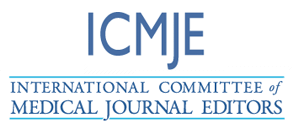Media and Gradien for Separation of Isolation Cell in Biomedical Research: A Review Article
Keywords:
Isolation Cell, Biomedical, Research, GradientAbstract
Introduction: Isolation of one type or several types of cells from heterogeneous populations is an integral part of modern biological research, routine clinical diagnosis and treatment. The purification of specific cells is essential for basic cell biology research, cellular enumeration in specific pathologies and cell-based regenerative therapies. The main principle of separating any type of cell from a population is to take advantage of one or more specific traits for a particular type of cell.
Discussion: The medium used to separate cells by density gradient centrifugation consists of a gradient that includes the densities of all possible cell types in the mixture. During the centrifugal process, each type of cell will settle to the part of the gradient that has the same density as the cell, namely the isopicnic point. As the above equation, when the density of the medium gradient phase and the cell type are the same, the sedimentation rate is zero, and the cells will settle in that phase instead of the bottom of the tube. Therefore, the cells are only separated by density, regardless of their size. The heavier cells usually become pellets while the lightest cells, along with the dead cells float on the gradient. The gradients used in density-based fractionation are mainly of two types continuous and discontinuous. A discontinuous gradient is made up of different bands with different densities that increase from top to bottom. The separation medium is diluted to a series of different densities and then carefully layered in descending order of density starting from the bottom layer to the top layer. This kind of gradient has a sharp surface between the bands and is therefore used when a sharp band of cells is required on the relevant surface. Continuous gradients are widely used to break up blood cell populations
Conclusion: The separator has three compartments with a closing means which can be operated between the first and second compartments, and between the second and third compartments. Aggregation-inducing density gradient medium (having a density between erythrocyte and MNC densities) was provided in the first (bottommost) compartment, a non-inducing density gradient medium.
References
I. Colter D, Class R, DiGirolamo C, Prockop D. Rapid expansion of recycling stem cells in cultures of plastic-adherent cells from human bone marrow. Proc Natl Acad Sci U S A. 2000;97:3213-8 pubmed
II. Segman, R. H., Shefi, N., Goltser-Dubner, T., Friedman, N., Kaminski, N., & Shalev, A. Y. Peripheral blood mononuclear cell gene expression profiles identify emergent post-traumatic stress disorder among trauma survivors. Mol Psychiatry.2005 10, 500-513, 425.
III. Aiello, A. E., et al. Cytomegalovirus antibodies as a marker of immunosenescence in the Detroit Neighborhood Health Study. 9th International Conference on Urban Health. New York Academy of Medicine. (2010).
IV. Debey, S. et al. Comparison of different isolation techniques prior gene expression profiling of blood derived cells: impact on physiological responses, on overall expression and the role of different cell types. Pharmacogenomics J. 4, 193-207 (2004).
V. Mallone, R. et al. Isolation and preservation of peripheral blood mononuclear cells for analysis of islet antigen-reactive T cell responses: position statement of the T-Cell Workshop Committee of the Immunology of Diabetes Society. Clin Exp Immunol. 163, 33-49 (2011).
VI. Duvigneau, J. C., Hartl, R. T., Teinfalt, M., & Gemeiner, M. Delay in processing porcine whole blood affects cytokine expression. J Immunol Methods. 272, 11-21 (2003).
VII. Sonka J, Stohr M, Vogt Schaden M, Volm M. Isopycnic density-gradient centrifugation: a separation parameter which improves flow cytometric measurements on heterogeneous tumors. Cytometry. 1983;4:141-9 pubmed
VIII. Uddin, M. et al. Epigenetic and immune function profiles associated with posttraumatic stress disorder. Proc Natl Acad Sci U S A. 107, 9470-9475 (2010).
IX. Uddin, M., et al. Post-traumatic stress disorder is associated with immunosenescent T cell phenotypes in the Detroit Neighborhood Health Study. 3rd North American Congress of Epidemiology. Montreal, QC. (2011).
X. Ulmer A, Flad H. Discontinuous density gradient separation of human mononuclear leucocytes using Percoll as gradient medium. J Immunol Methods. 1979;30:1-10 pubmed
XI. Weiswald L, Bellet D, Dangles Marie V. Spherical cancer models in tumor biology. Neoplasia. 2015;17:1-15 pubmed publisher












